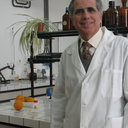Individual and combined effects of postharvest dip treatments with water at 50 degrees C, soy lecithin and sodium carbonate on cold stored cactus pear fruits.
Keywords
Abstract
Objective of this study was to evaluate the effect of prestorage dip treatments at 20 degrees C or 50 degrees C alone or with sodium carbonate (SC) and soy lecithin (LEC), either individually or in combination, on weight losses, peel disorders, overall appearance and decay of cactus pears. Fruits were subjected to a simulated Mediterranean fruit fly (medfly) disinfestation by cold quarantine at 2 degrees C for 21 days followed by one week of shelf-life at 20 degrees C. Hot water alone was very effective in reducing peel disorders and decay both during cold storage and shelf-life. SC applied at 20 degrees C showed a weak control of decay and chilling injury, while its effectiveness significantly increased when the solution temperature was set to 50 degrees C. LEC was more effective in preserving freshness during cold storage, but after shelf-life decay incidence in fruit dipped in LEC at 20 degrees C or 50 degrees C was higher than in those dipped in water at 20 degrees C or 50 degrees C, respectively. Significant but moderate differences were detected among treatments in weight loss. After shelf-life, fruit dipped in the heated mixture of SC and LEC showed the lowest incidence of peel disorders and the highest percentage of marketable fruit, although decay incidence was slightly higher than in fruit treated with SC at 50 degrees C. SC and LEC used in combination at 50 degrees C improved fruit tolerance to chilling injury and reduced decay.




